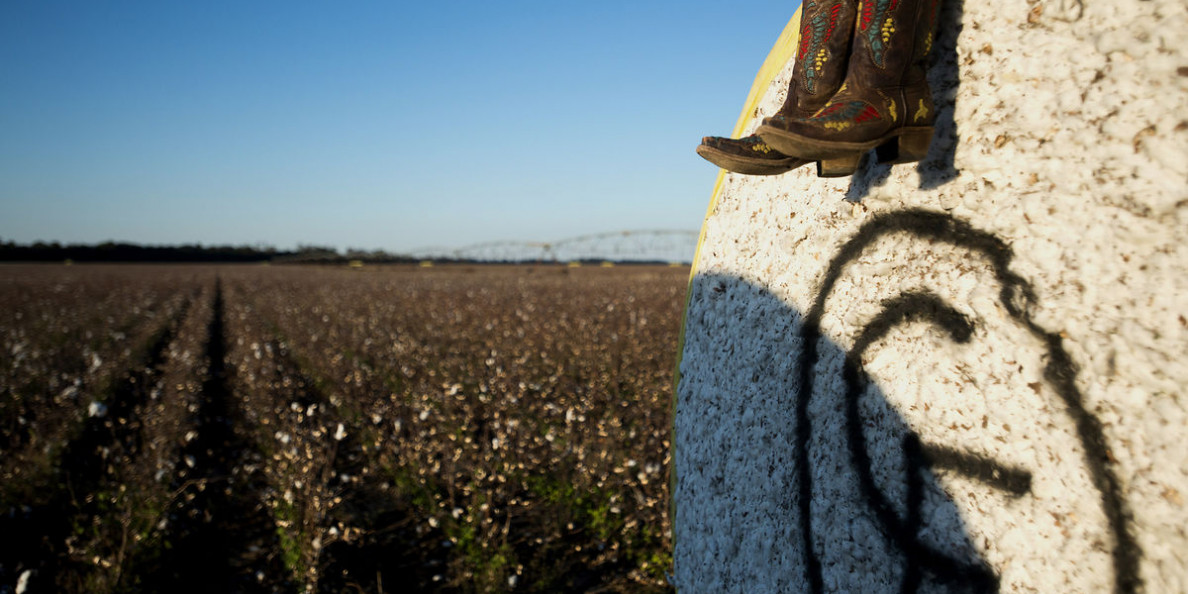September 22, 2023
- Fed Held Interest Rates Steady at September Meeting
- A Net Total of 105,400 Upland Bales and 800 Pima Bales were Sold for the Week Ending September 14
- Above Average Temperatures and Precipitation Expected in the Week Ahead
December futures traded sideways most of the week, struggling to find direction with light daily volumes and little data to trade on. The daily dynamics kept the cotton market within a relatively tight trading range for much of the week. The weekly condition report showed a slight deterioration of the U.S. crop, which moved the market up slightly at the beginning of the week. Domestic prices in China were also high early in the week, which helped boost U.S. prices. The Fed decision on interest rates and slightly hawkish indication of what is to come weighed on prices towards the end of the week. Lastly, another disappointing Export Sales Report released on Thursday pressured futures to finish the week lower. For the week ending September 21, December futures settled at 86.47 cents per pound, down 133 points from the week prior. Total open interest climbed to its highest level since November 2022, posting an increase of 7,212 contracts to finish at 234,967. ICE certified stock has started to build, and when compared to last week, has more than doubled to reach 20,485 bales.
Outside Markets
The Federal Open Markets Committee (FOMC) met this week and as expected, interest rates were held steady at the 22-year high of 5.25%. After the rate announcement, Fed officials noted that a 25-basis point rate hike will likely occur again before the end of the year and that rates will be held higher for longer. The news was hawkish for outside markets, and stocks finished lower on Wednesday. The loss was extended into Thursday, when U.S. initial jobless claims fell to an almost 8-month low of 201,000 claims, another signal the Fed continue to raise rates. Treasury yields reached 16-year highs and the Dollar found continued support on the hawkish news from the Fed. A strong U.S. Dollar helps U.S. importers, but puts a headwind on exports, such as cotton. Crude oil is still on an uptrend but backed off the highs seen early in the week after the Fed’s announcement on Wednesday. The United Auto Workers went on strike last Friday and little progress has been made on negotiations, which has added pressure to markets. Lastly, if Congress does not find a resolution for funding for the federal government before September 30, the government will shut down.
Export Sales
The tone in the export market has not changed since last week. Net sales increased, but demand for U.S. cotton continues to struggle. A net total of 105,400 Upland bales and 800 Pima bales were booked for the week ending September 14, both far below what is averaged at this point in the marketing year. The biggest buyer of Upland cotton for the week was Vietnam, booking 44,600 bales, followed by China with 25,900 bales, Mexico with 16,900 bales, Bangladesh with 12,900 bales, and Turkey with 5,400 bales. Cancellations of 4,700 bales were reported, with 4,400 bales of that coming from Pakistan. Although not as notable as previous weeks, the cancellations were not entirely surprising because of continued currency issues and a larger crop in Pakistan. Shipments increased this week but continue to stay below the pace needed to meet the USDA export estimate. A total of 150,700 Upland bales and 2,000 Pima bales were shipped for the week.
Weather and Crop Progress
Scattered storms were reported across West Texas, Oklahoma, and Kansas throughout the past week. The precipitation provided little benefit for much of the crop considering the extremely dry conditions present in the area throughout the summer months. Above average temperatures and precipitation are forecast for the region in the week ahead. The Crop Progress and Condition Report showed another slight deterioration of the U.S. crop, but 29% of the crop is still rated good to excellent. The crop continues to mature, and 55% of bolls were reported as opened across the country. Harvest has started in over half of the states and 9% of the crop had been harvested as of September 17.
The Week Ahead
Cotton specific news was light this week and will likely be light next week. Traders will continue to monitor crop conditions on Monday, daily classing reports, ICE certified stock, and Thursday’s Export Sales Report to see what kind of demand there is for U.S. cotton. Outside markets will also be closely monitored given the impending government shutdown and autoworkers strike.
- Friday at 2:30 p.m. Central – Commitments of Traders
- Monday at 3:00 p.m. Central – Crop Progress and Condition Report
- Thursday at 7:30 a.m. Central – Export Sales Report
- Thursday at 2:30 p.m. Central – Cotton On-Call


